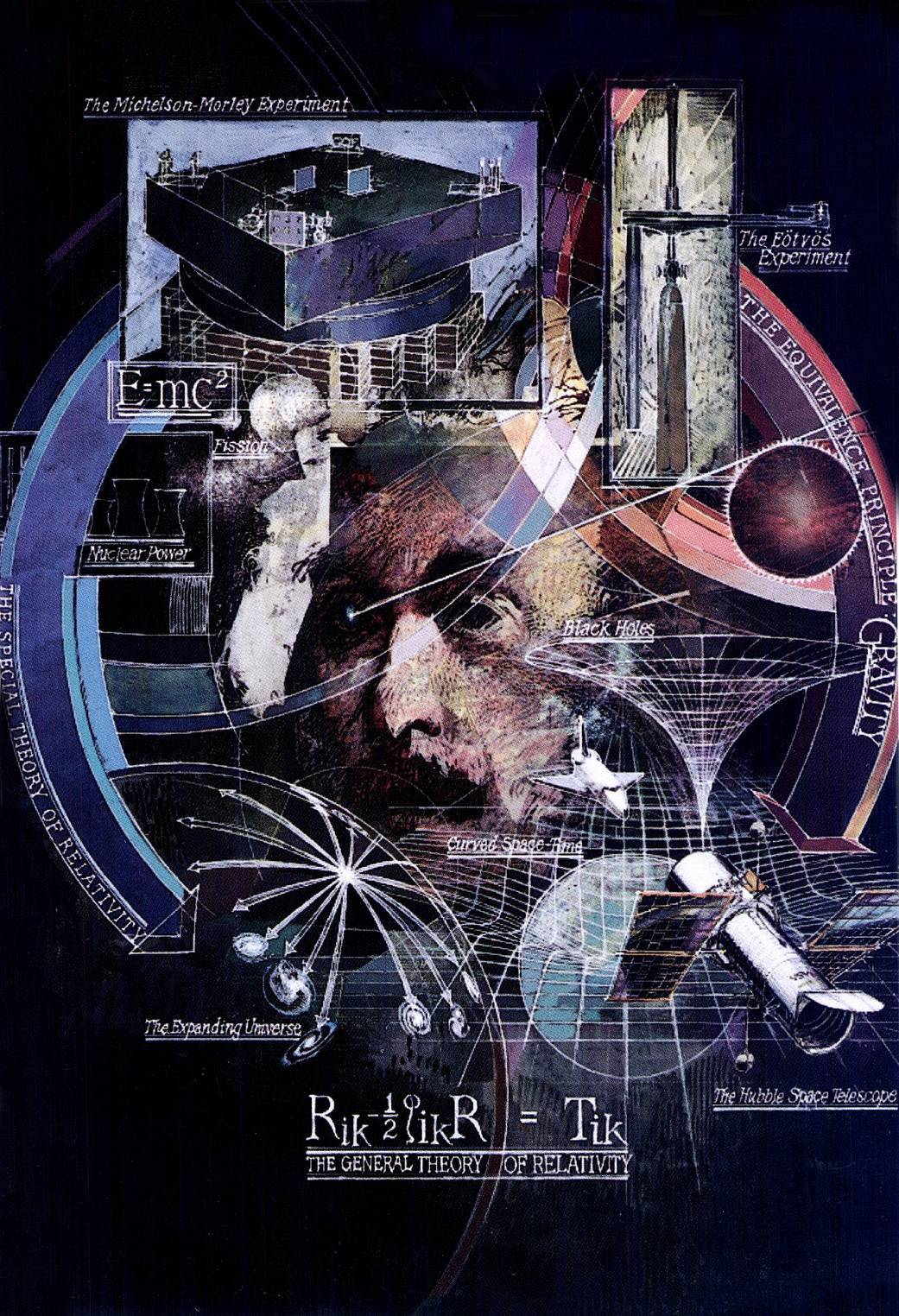
Einstein’s general theory of relativity was embedded deeply within the larger framework of nineteenth and early twentieth century theory and experimentation. His own 1905 special theory of relativity had established the speed of light as the upper limit of signal propagation and demolished the Newtonian notions of absolute space and absolute time.
Einstein’s general theory of relativity was embedded deeply within the larger framework of nineteenth and early twentieth century theory and experimentation. His own 1905 special theory of relativity had established the speed of light as the upper limit of signal propagation and demolished the Newtonian notions of absolute space and absolute time. While the Newtonian framework had worked well-enough within the solar system where smaller gravitational forces dominated, only Einstein’s general theory of relativity described conditions near massive objects like black holes.
Image credit: Stanford University/Barron Storey


























